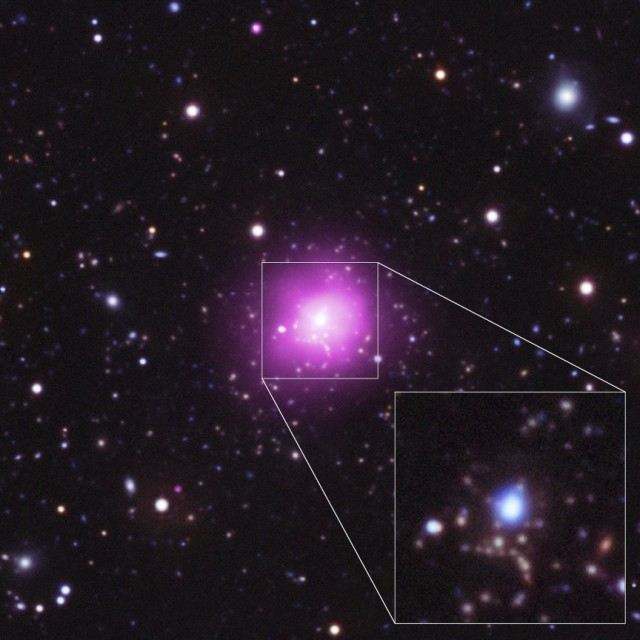
Composite image of the Phoenix Cluster, consisting of ultraviolet (UV), optical, and X-ray images. The inset combines optical and UV light, zooming in on the central galaxy of the cluster, where rapid star-formation is in progress.
X-ray: NASA/CXC/MIT/M.McDonald; UV: NASA/JPL-Caltech/M.McDonald; Optical: AURA/NOAO/CTIO/MIT/M.McDonald
Galaxy clusters can contain hundreds of galaxies, and the ones at their centers are the largest galaxies known to astronomers. These huge objects are the product of successive mergers between smaller galaxies, a process that has exhausted the raw materials for the formation of stars. That is, in every case but one—a new set of observations have revealed one of the largest and hottest galaxy clusters yet seen, and its central galaxy has an unexpectedly high rate of star formation. This finding may provide new insights into the history of galaxy clusters and the formation of structure in the Universe.
Galaxy clusters are the largest objects in the Universe bound by their own gravity; rich clusters contain hundreds of galaxies. While most of a cluster's mass is in the form of dark matter, each also has a significant amount of hot plasma filling the space between galaxies. This intracluster medium (ICM) is very bright in X-ray light, due to internal temperatures greater than 10 million Kelvins (107 K).
In most cases, the ICM is diffuse, but there are some hot cores where the density is high enough that the plasma can cool by emitting radiation. Once cooled, the matter will fall to the center of the cluster due to gravity, creating what's called a cooling flow.
Read 10 remaining paragraphs | Comments
DIGITAL JUICE
No comments:
Post a Comment
Thank's!